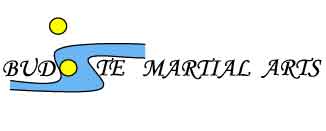Self-defense, delivered.
Instruction Rates
Monthly Tuition
$60 / month
Class Schedule
Monday 6:30 PM to 8:30 PMContact us before stopping by to ensure availability
What Do We Offer?
Personalized Training

Instruction in traditional Okinawan karate that includes forms, self-defense, fighting and weapons.
Trial Lessons

We’re always happy to welcome enthusiastic new additions to our dojo. Come have an intro lesson and get to know the Budo-Te Dojo. Turn one day into DAY ONE!
Modern Instructional Methods

No push ups on your knuckles here (unless you want to). Professional instruction using established learning theory.
Traditional Forms and Techniques
Okinawan Karate
Learn traditional Okinawan Karate Forms
Self-Defense
Learn traditional techniques to defend yourself in many different scenarios
Skilled Fighting
Learn advanced fighting techniques
Weapons Training
Learn techniques that utilize traditional weapons
About Us
Shorin-Ryu Matsumura SeitoBrief HistoryEarly Okinawan Karate or Tode (Tuide) as it was called owes its origin to a mixture of indigenous Okinawan fighting arts and various "footfighting" systems and empty hand systems of Southeastern Asia and China. The Okinawans, being a seafaring people, were in almost constant contact with mainland Asia. It is quite likely Okinawan seamen visiting foreign ports of call may have been impressed with local fighting techniques and incorporated these into their own fighting methods. Most modern styles of Karate can be traced back to the famous Satunuku Sakugawa (1733-1815) called "Tudi" Sakugawa. Sakugawa first studied under Peichin Takahara of Shuri. Later Sakugawa went to China to train under KuSanku, a Chinese military attache in Okinawa. When KuSanku returned to China, Sakugawa followed him and remained for 6 years. In 1762 he returned to Okinawa and introduced his Kenpo, which has lead to the Karate we know today. Sakugawa's most famous student was Sokon Matsumura.Matsumura (1797-1889) studied under Sakugawa for 4 years. He was recruited into the service of the Sho family, rulers of Okinawa, as a bodyguard to the King. For his skills, he was awarded the title of 'Bushi". At some point Matsumura was sent to China to train in the Shorinji (Shaolin) Temple where he stayed many years. Upon his return to Okinawa, Bushi Matsumura established the Shuri Te (Suidi) style that later became known as Shorin-Ryu.Shorin is the Japanese/Okinawan pronunciation of the Chinese written character Shaolin. In both languages Shorin means "Pine Forest." Ryu simply means 'methods handed down' or 'methods of learning'. Bushi Matsumura passed on the Shorin-Ryu system to his Grandson, Nabe Matsumura.Not much is known of Nabe Matsumura and his name does not appear in many Karate lineage charts. He was alleged to be very strict and preferred to teach mainly family members. He was called "Old Man Nabe" and was said to be one of the top Karate men of his time. Nabe passed the style on to his nephew Hohan Soken.Hohan Soken (1889-1982) decided at an early age to study his ancestors art of Shorin-Ryu under his Uncle. At age 23, Nabe began instructing young Soken in the secrets of the White Crane (Hakusuru). In the early part of the 20th Century, Karate in Okinawa, under the Japanese influence, underwent a certain amount of change, becoming more of a sport. Sokon, unwilling to adapt his style, moved to Argentina. Returning to Okinawa he found Karate greatly changed and unhappy with these changes, refused to join the more fashionable associations and founded the Matsumura Seito (Orthodox/traditional) to preserve the methods that had been passed on from Bushi Matsumura. There are 4 main styles of Shorin-Ryu Karate practiced today:Matsubayashi-Ryu - founded by Shoshin NagamineKobyashi-Ryu - founded by Chosin ChibanaShobayashi-Ryu - founded by Ezio ShimabukuroMatsumura Seito - founded by Hohan Soken

Chief Instructor
Jeff Maughan
I started my training in Judo at age 13 after watching Enter the Dragon as a birthday present. My martial arts journey has allowed me to learn and train in Tang So Do, Tai Lung Chuan Kung Fu, Tomiki Aikido, and Shorin-Ryu Matsumura Seito. According to Sensei Lindsey, "There will come a time where if you want to learn traditional Okinawan karate, you'll have to come to the U.S." I believe that to be quite true. The Budo-Te dojo is here to help preserve and maintain the legacy of Matsumura Seito Shorin-Ryu karate.

Where?
Instruction in the Olympia, Washington area.
When?
Class Schedule:
Monday's 6:30 to 8:30 PM
Monday's 6:30 to 8:30 PM





